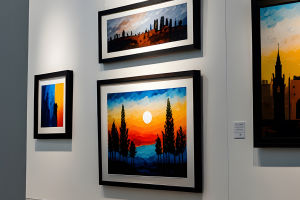As we stroll through city streets, we often spot colorful murals, bold letters, and striking images on walls, bridges, and even sidewalks. Some of these instantly catch our eye and brighten the urban landscape.
That's the power of street art, or what many call graffiti.
But here's where the debate begins. Is graffiti a legitimate form of art, or is it simply vandalism? Should it be legalized, or strictly controlled? We believe this is a topic worth exploring, especially as more cities around the world embrace the potential of public art.
The Origins of the Debate
Graffiti has long been linked to rebellion and underground culture. In many places, it started as an unsanctioned way for young people to express themselves or comment on social issues. Naturally, property owners and city officials saw it as an eyesore or even a crime.
But times are changing. More communities now recognize that graffiti, when done thoughtfully and with permission, can:
• Beautify public spaces
• Celebrate local culture
• Boost tourism
• Provide a voice to underrepresented groups
This shift in mindset has led to growing conversations around legalizing street art—and with it, plenty of controversy.
Arguments for Legalizing Graffiti
Let's look at why many artists and urban planners support legal graffiti.
1. Fostering creativity
Street art gives artists a huge canvas to express fresh, vibrant ideas that might not fit into traditional galleries.
2. Revitalizing neighborhoods
Studies show that murals and public art projects can make areas feel safer and more inviting. Some cities, like Melbourne and Berlin, have even turned graffiti hotspots into major tourist attractions.
3. Building community pride
When local artists are invited to decorate public spaces, it fosters a stronger connection between people and their neighborhoods.
4. Reducing illegal tagging
Interestingly, giving artists legal spaces to paint often reduces illegal graffiti in surrounding areas—a fact supported by several urban studies.
Concerns and Criticisms
Of course, not everyone is on board with legal graffiti. Here are some common concerns:
1. Property rights
Some argue that even with permission, street art can influence how neighborhoods look, sometimes against the wishes of property owners or residents.
2. Quality control
Not all graffiti is equal. While some murals are breathtaking, others may be crude or offensive. Setting standards while maintaining creative freedom is tricky.
3. Slippery slope
Critics worry that legalizing graffiti might encourage illegal tagging elsewhere, making enforcement more difficult.
4. Maintenance challenges
Street art is exposed to weather and wear. Cities must commit resources to maintain murals or remove faded, damaged work.
Different Global Approaches
Around the world, cities handle graffiti in various ways:
• Melbourne created legal "graffiti lanes" where artists can paint freely. These lanes are now top tourist spots.
• Berlin supports both commissioned murals and legal walls for spontaneous work.
• New York City balances between celebrating murals and cracking down on unauthorized graffiti.
These examples show that thoughtful policies can harness the energy of street art while addressing public concerns.
The Role of Dialogue
At the heart of this debate is the need for ongoing conversation. We can't ignore the artistic value that graffiti brings, nor the concerns of communities who want clean, well-maintained spaces.
Experts like Dr. Rafael Schacter, an anthropologist specializing in street art, suggest that legal graffiti projects work best when they involve community input and clear guidelines. "Successful street art programs balance creative freedom with respect for public and private space," he notes.
Final Thoughts: Finding Common Ground
As we see it, street art is here to stay. The real question is how we, as communities, choose to shape its presence in our cities.
Legalizing graffiti, when done thoughtfully, offers exciting possibilities. It can beautify public spaces, promote cultural expression, and even drive economic benefits. But it also demands careful planning, clear communication, and respect for all stakeholders.
So Lykkers, what do you think? Have you seen a piece of street art that inspired you—or one that made you question its place in public space? We'd love to hear your thoughts on this colorful, complex debate!


